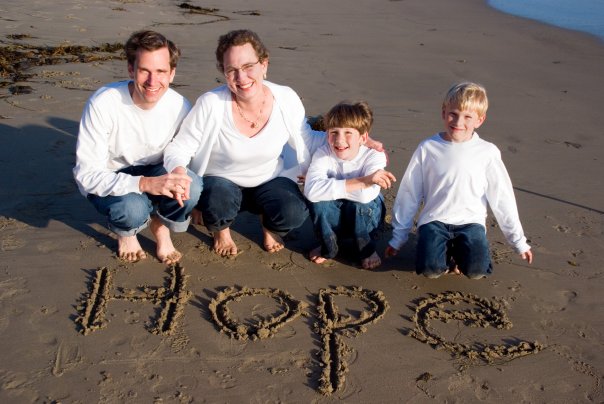Not much happened today. Most of the day Krista continued to have stomach pains, and slept quite a bit to get through it. Some relief came later in the day when she had a successful movement. She seems to feel much better, though she tells me that the nausea is still there.
The nausea and constipation are typical symptoms of chemotherapy and radiation treatments. Even when she was in the hospital they regularly offered her stool softeners. The problem with Krista is that the stool softeners don't do anything -- her stool stays blocked and when it comes out it's hard as can be. We talked with the doctor about this a while ago, and he agreed that we could switch to natural laxatives. The laxatives work, but at full dose they work too well. Krista doesn't like the "harsh" feeling of loose stools, so she's been taking a small fraction of a dose, to minimize the number of pills she takes, only it doesn't seem to be doing much. Both times she's been this backed up, we've only seen relief when I give her about a tablespoon of flax-seed oil, mixed in with a smoothie. Today she complained about only being able to taste the oil, but at least it worked!
The rash on her hands has moved all the way up to her elbow, and the rash on her feet is moving up toward her knees. The rash is only occasionally red-colored; it's usually just raised bumps on her skin. This is definitely Graft-Versus-Host-Disease (GVHD), so we're going to see if the doctor needs to adjust anything for it tomorrow at our regularly scheduled blood work appointment. She's already on the immunosuppressents which they use to treat GVHD, but they may need to increase the dose. Another way of dealing with GVHD is to give steroids, but Krista has had strange reactions to steroids like predisone, so I think they would like to avoid this if possible.
GVHD is known to affect the gastro-intestinal system as well as the skin. Krista seems to think that her intestinal problems are GVHD, though the doctor has said that when it effects the GI tract they expect to see diarrhea, especially bloody diarrhea. She is also concerned that the GVHD rash is developing on her nose. She does have a small blemish, but it doesn't look like the bumps on her hands and feet. We'll have the doctor look at that also, just in case.
GVHD almost always happens with unrelated stem-cell transfusions. GVHD problems that arise within the first 100 days after transplant are considered acute, and anything thereafter is considered chronic. Acute GVHD symptoms, if they remain small, tend to also be transitional and should fade with time. On the other hand, large acute GVHD symptoms can be very difficult and even deadly in extreme cases. The doctors have done a good job so far with the preventative steps, which include getting a close donor match and using cord blood. These and the immunosuppressents have helped Krista's symptoms to stay on the smaller side, and hopefully they can keep them that way. It may even be that the best course of action is to keep on with the current treatment.
Please pray for wisdom for the doctors to find the correct way to treat Krista. God knows her better than anyone, and it would be good for Him to keep them in line. Also, pray that Krista would have peace through all of this, because it's easy for her to get discouraged with all these problems.
For You created my inmost being;
You knit me together in my mother's womb.
I praise You because I am fearfully and wonderfully made;
Your works are wonderful,
I know that full well.
My frame was not hidden from You
when I was made in the secret place.
When I was woven together in the depths of the earth,
Your eyes saw my unformed body.
All the days ordained for me
were written in your book
before one of them came to be.
How precious to me are Your thoughts, O God!
How vast is the sum of them!
Were I to count them,
they would outnumber the grains of sand.
When I awake,
I am still with You.
(Psalm 139:13-18)

No comments:
Post a Comment